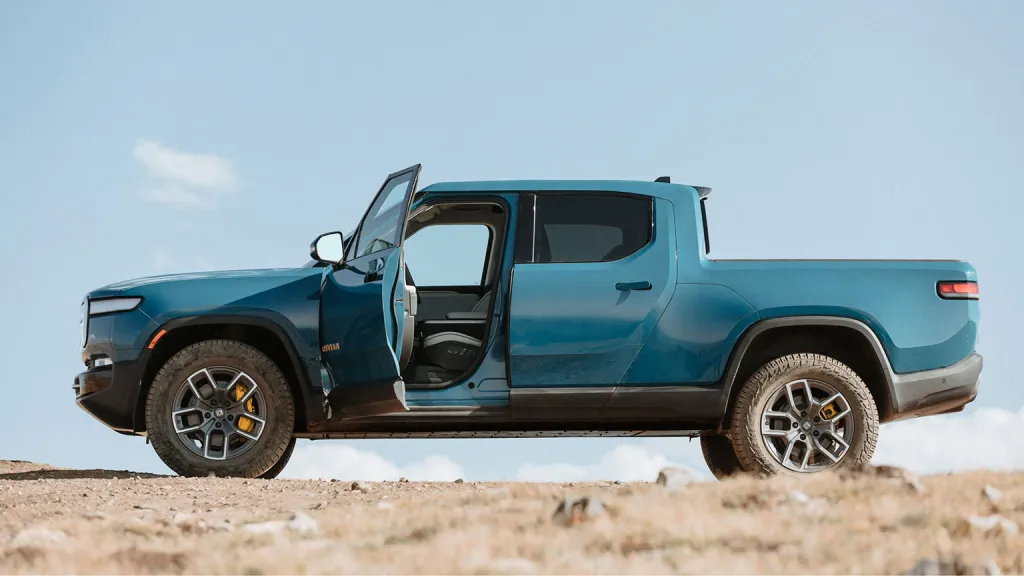In a world where urban transport is constantly evolving, Rivian stands out as a beacon of innovation and sustainability. Did you know that by 2030, urban areas are expected to house nearly 60% of the world’s population? This rapid urbanization poses significant challenges for transportation systems. Enter Rivian, an electric vehicle (EV) manufacturer known for its adventurous spirit and commitment to sustainability. By 2024, Rivian aims to revolutionize urban transport with its latest EV innovations, promising to redefine how we navigate city life. In this article, we’ll explore Rivian’s groundbreaking advancements, their potential impact on urban mobility, and what this means for the future of sustainable transportation.
The Future of Urban Mobility: Rivian’s Vision
Rivian’s Revolutionary EV Models
Rivian has already made waves with its R1T and R1S models, but it’s the upcoming fleet designed specifically for urban transport that has industry insiders buzzing. These new models are set to launch in 2024, focusing on compact design, efficiency, and sustainability. Here are some highlights:
- Compact and Agile Design: Unlike traditional EVs, Rivian’s urban models will be smaller and more maneuverable, perfect for congested city streets.
- Advanced Battery Technology: Utilizing the latest in solid-state battery technology, these vehicles promise longer range and faster charging times. According to Battery University, solid-state batteries can increase energy density by 50% compared to lithium-ion batteries.
- AI-Driven Features: Incorporating AI and machine learning, these vehicles will offer features like autonomous driving, route optimization, and real-time traffic updates.
Impact on Urban Infrastructure
Rivian’s innovations are not just about vehicles; they’re about creating a holistic urban mobility ecosystem. Here’s how Rivian plans to influence urban infrastructure:
- Charging Stations: By 2024, Rivian plans to install over 10,000 fast-charging stations across major global cities, significantly reducing range anxiety for urban dwellers.
- Partnerships with Cities: Collaborating with city planners, Rivian aims to integrate EV-friendly policies and infrastructure, such as dedicated EV lanes and parking.
- Sustainable Manufacturing: Committed to sustainability, Rivian’s manufacturing processes will focus on reducing carbon emissions and utilizing recycled materials.
Practical Tips for Urban EV Adoption
How to Charge Your Rivian
With a robust charging network, charging your Rivian in the city will be a breeze. Here’s what you need to know:
- Locate Charging Stations: Use Rivian’s app to find the nearest fast-charging station. With stations strategically placed in high-density areas, you’ll never be far from a power source.
- Optimize Charging Times: Charge during off-peak hours to reduce costs and ensure faster charging speeds.
- Home Charging Solutions: For those with home garages, Rivian offers efficient home charging kits that can fully charge your vehicle overnight.
Where to Buy Rivian’s Latest Models
As Rivian prepares to launch its urban EVs, here’s how you can get your hands on one:
- Pre-Order Online: Rivian’s website allows you to pre-order your vehicle, with delivery expected by mid-2024.
- Visit Dealerships: Rivian plans to open several urban-focused showrooms in major cities, offering test drives and consultations.
- Compare with Competitors: Consider features, pricing, and after-sales service when comparing Rivian’s models with competitors like Tesla’s Model 3 or Hyundai’s Ioniq 5.
Rivian vs. Competitors: A Comparison
When it comes to urban EVs, Rivian is not alone. Here’s how it stacks up against its main competitors:
| Feature/Brand | Rivian Urban EVs | Tesla Model 3 | Hyundai Ioniq 5 |
|---|---|---|---|
| Range | 300 miles | 353 miles | 303 miles |
| Charging Time | 20 minutes | 25 minutes | 18 minutes |
| Price | $40,000 | $42,000 | $39,000 |
| Autonomous Features | Advanced | Basic Autopilot | Highway Assist |
Rivian’s urban EVs offer competitive pricing, advanced features, and a focus on sustainability, making them a compelling choice for urban dwellers.
Conclusion: A New Era for Urban Transport
Rivian’s latest EV innovations are more than just new models; they represent a shift towards a more sustainable and efficient urban transport system. By 2024, cities could see a transformation in how people commute, with cleaner air and less congestion. As we look to the future, Rivian’s commitment to innovation and sustainability positions it as a leader in the EV market.
Are you ready to embrace the future of urban transport? Consider Rivian’s latest offerings as a step towards a greener, more efficient city life. With urban populations growing and the demand for sustainable solutions rising, Rivian’s innovative approach could very well be the blueprint for cities worldwide. What do you think? Share your thoughts and join the conversation on how we can collectively shape the future of urban mobility.

